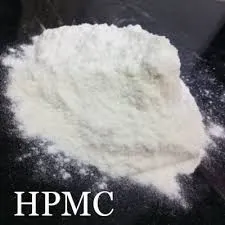
Sep . 09, 2024 10:30 Back to list
how to dissolve hydroxyethyl cellulose
How to Dissolve Hydroxyethyl Cellulose A Comprehensive Guide
Hydroxyethyl cellulose (HEC) is a water-soluble polymer derived from cellulose, commonly used in various applications, including pharmaceuticals, cosmetics, and construction. Its ability to form gels and provide viscosity makes it an invaluable ingredient in many formulations. However, dissolving HEC properly is crucial to achieving the desired texture and performance. This article will guide you through the process of dissolving hydroxyethyl cellulose effectively.
Understanding Hydroxyethyl Cellulose
Before diving into the dissolution process, it is essential to understand the properties of HEC. HEC is a non-ionic polysaccharide. It is available in different molecular weights, which affect its solubility and viscosity. The solubility of HEC in water depends on its molecular size and the concentration used in the formulation.
Materials Needed
To dissolve HEC, you will need the following materials
1. Hydroxyethyl cellulose powder 2. Distilled water or a suitable solvent 3. A mixing container 4. A mechanical stirrer or high-shear mixer 5. Measuring scale
Step-by-Step Dissolution Process
1. Measure the HEC Start by measuring the desired amount of HEC powder. The concentration typically ranges from 0.5% to 5%, depending on your application.
how to dissolve hydroxyethyl cellulose

2. Prepare the Water It's crucial to use distilled water to avoid impurities that may interfere with the dissolution process. If you are creating a formulation that requires a different solvent, ensure that HEC is compatible with that solvent.
3. Add HEC to Water Gradually sprinkle the HEC powder onto the surface of the water. This technique prevents clumping and allows for better dispersion. Do not dump the powder all at once, as this can lead to lumps.
4. Stir the Mixture Use a mechanical stirrer or a high-shear mixer to blend the water and HEC. Start at a low speed and gradually increase to avoid introducing too much air into the mixture. Continue stirring for 15 to 30 minutes or until the HEC is fully dissolved.
5. Allow Time for Hydration After initial mixing, let the mixture sit for a while. HEC requires time to hydrate fully; typically, this could take from 30 minutes to several hours, depending on the concentration and environmental conditions.
6. Check for Consistency Once the HEC is hydrated, check the viscosity and consistency of the solution. If lumps are present, adjusted stirring speed or mixing time might be necessary. You can also gently pass the mixture through a fine mesh or sieve if needed.
7. Storage If not using the solution immediately, store it in a sealed container to prevent contamination. Make sure to label the container with the date and concentration for future reference.
Conclusion
Dissolving hydroxyethyl cellulose is a simple yet critical process in many applications. By following the steps outlined above, you can achieve a smooth and consistent HEC solution that enhances the performance of your formulations. Proper dissolution not only ensures the effectiveness of the product but also contributes to an improved user experience. Whether you're in the lab, developing a new cosmetic product, or working on construction materials, mastering the art of dissolving HEC is essential for successful outcomes.
-
Versatile Hpmc Uses in Different Industries
NewsJun.19,2025
-
Redispersible Powder's Role in Enhancing Durability of Construction Products
NewsJun.19,2025
-
Hydroxyethyl Cellulose Applications Driving Green Industrial Processes
NewsJun.19,2025
-
Exploring Different Redispersible Polymer Powder
NewsJun.19,2025
-
Choosing the Right Mortar Bonding Agent
NewsJun.19,2025
-
Applications and Significance of China Hpmc in Modern Industries
NewsJun.19,2025







